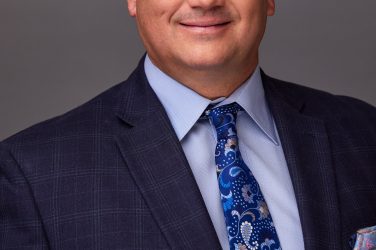
Q&A
What Are The Important Issues Affecting 9-1-1 Service?
The District has experienced many internal and external influences over the past few years that have changed how it conducts business. With the explosion in technology advancements, our staff constantly evaluates the newest products to ensure effective integration with
9-1-1. The popularity of wireless telephones significantly affected call volume in every area of the District — more than 90% of all 9-1-1 calls come from a wireless device. This creates challenges in public safety but also great opportunities. For example, advances in technology have improved our ability to quickly and precisely determine a wireless caller’s location, which speeds up emergency call routing and response.
What Are The Benefits Of Advanced Technology?
A more precise location from a wireless 9-1-1 call enables emergency personnel to utilize highly accurate GIS data to pinpoint an indoor location to a specific room. In large, complex facilities, this can be vital, especially if the caller can’t speak or isn’t sure where, within the facility, they are located. The District receives elevation data from wireless phones and is actively working on converting that data to a dispatchable location for accurate emergency response. Other technological advances, such as the ability to text to 9-1-1, have been major improvements for citizens in an emergency where it isn’t safe to speak and for speech and hearing-impaired callers.
Can A 9-1-1 Dispatcher Help Me By Phone In A Medical Emergency?
All dispatchers in the District receive certification to provide pre-arrival instructions to callers while the emergency medical personnel are en route. Countless lives have been saved by 9-1-1 personnel providing instructions over the phone to stop bleeding, deliver a baby, begin CPR, and other life-saving processes. Recently, Denco undertook a new initiative to ask community members to report the location of automated external defibrillator (AED) devices. The AED locations are stored in a database accessible to 9-1-1 personnel during a 9-1-1 call reporting a cardiac emergency.
What Can I Teach My Child About Calling 9-1-1?
It is okay to call 9-1-1 without fear. Obviously, calls to 9-1-1 should only be made if they are important. But it’s okay to call anytime someone is hurt, needs help, or is scared. Trained 9-1-1 professionals care and will do everything possible to send help. Once you dial 9-1-1, do not hang up until the dispatcher says it’s okay. If you dial 9-1-1 by mistake, don’t hang up. Children need to know their home address, school name, and parent’s name and phone number.
What Should Citizens Know About 9-1-1?
The 9-1-1 system serving this community is one of the most technologically advanced. No system is completely failsafe, but extraordinary effort has been expended to ensure equipment and network redundancy, resulting in high availability of this critical system. The 9-1-1 personnel answering calls are trained, dedicated professionals. They spend months training when hired and continually train throughout their careers. These special individuals are called the “first first responders.”
About The Expert

Greg Ballentine
Executive Director
Denco Area 9-1-1 District
Greg Ballentine’s decorated career in public safety spans several leadership roles over more than 40 years. He has led agency and technology advancements within the Denco Area 9-1-1 District for over 10 years, serving as its deputy executive director before being appointed executive director in 2020.










